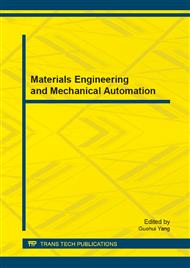p.125
p.129
p.134
p.138
p.142
p.147
p.152
p.156
p.162
Comparison of Biomaterials from Essential Oils in Five Parts of Magnolia sieboldii
Abstract:
Essential oils were extracted from biomaterials of root bark, stem bark, twigs, leaves and flowers from Magnolia sieboldii by the means of steam distillation. Their chemical compositions of these essential oils were analyzed by GC-MS method and their flavor properties were evaluated based on the basic media of cold creams. The results showed that the highest yield of essential oils belonged to the essential oil from root bark and the lowest belonged to that from leaves; As to flavor, the parts of leaves and flower are more suitable for exploiting cosmetic products; Twigs, flowers and leaves belonged to the same cluster by Hierarchical cluster analysis on chemical components from these essential oils. The essential oil from leaves should be further exploited due to its good flavor for cosmetic products and a kind of newable natural resources, although this essential oil had lower extraction yeilds.
Info:
Periodical:
Pages:
142-146
Citation:
Online since:
October 2013
Authors:
Price:
Сopyright:
© 2014 Trans Tech Publications Ltd. All Rights Reserved
Share:
Citation:


